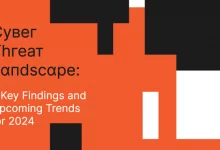Cybercrime and Financial Fraud: Protecting your Finances in the Digital Age
As technology continues to advance, our lives are becoming increasingly digitalized. We rely on the internet and online platforms for a wide range of activities, from communication to shopping and financial transactions. However, this digital age also brings with it new threats, such as cybercrime and financial fraud. Protecting our finances in this digital age has never been more important.
Cybercrime refers to criminal activities that are carried out using computers or the internet. Financial fraud, on the other hand, involves the intentional deception or misrepresentation for personal gain. Both cybercrime and financial fraud pose a significant threat to individuals, businesses, and even governments.
One of the most common forms of cybercrime and financial fraud is identity theft. Criminals use various techniques to obtain personal information, such as social security numbers, bank account details, and passwords. With this information, they can gain unauthorized access to your financial accounts, make fraudulent purchases, and even apply for loans under your name. The consequences of identity theft can be devastating, leading to financial loss, damaged credit scores, and even legal complications.
To protect your finances in the digital age, there are several key steps you can take. Firstly, ensure that your devices and software are up to date with the latest security patches. Cybercriminals often exploit vulnerabilities in outdated systems, so keeping your devices updated is crucial. Install reputable antivirus software and enable firewalls to provide an additional layer of protection.
Creating strong and unique passwords is another essential step in safeguarding your finances. Avoid using easily guessable passwords, such as your name or birthdate. Instead, opt for complex combinations of upper and lower-case letters, numbers, and special characters. Additionally, consider using a password manager to securely store and generate strong passwords.
Be cautious when sharing personal information online. Avoid clicking on suspicious links or providing sensitive details on unsecured websites or emails. Phishing scams, where criminals impersonate trusted entities, are common methods used to trick individuals into revealing personal information. Always double-check the source of any online requests for personal or financial information.
Regularly monitor your financial accounts and credit reports. Review your bank statements and transaction history frequently to identify any unusual or unauthorized activity. Consider setting up alerts for potential fraudulent actions, such as large withdrawals or changes to contact information. Utilize free credit monitoring services to keep an eye on any potential unauthorized changes to your credit reports.
Another important measure is to be cautious when conducting financial transactions online. Stick to reputable online platforms and ensure that they secure your information using encryption technology. Always look for the lock symbol or “https” in the website’s address, indicating a secure connection. Avoid making financial transactions using public Wi-Fi networks, as they are often unsecured and prone to interception.
Lastly, be skeptical and vigilant. Stay informed about the latest cyber threats and fraud techniques. Be cautious of unexpected emails, phone calls, or messages requesting financial information or personal details. When in doubt, contact the organization or individual directly through official channels to verify the legitimacy of the request.
In conclusion, the digital age has transformed the way we live and manage our finances. While it comes with numerous advantages, it also exposes us to cybercrime and financial fraud. Protecting our finances requires vigilance and proactive measures. By staying informed, adopting secure practices, and regularly monitoring our financial accounts, we can minimize the risk of falling victim to cybercrime and financial fraud in this digital age.





